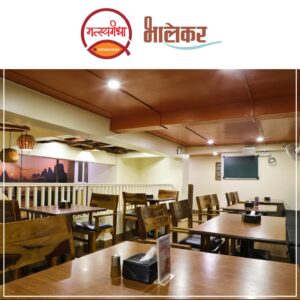Shaniwar Wada is a 17th-century fort in Pune, India. It was once the seat of the Peshwa rulers of the Maratha Empire, and it is now a popular tourist destination. The fort is located on the banks of the Mula-Mutha River, and it is surrounded by a moat. The main entrance to the fort is through the Dilli Darwaza, which is a massive gateway with seven arches.
Nestled in the heart of Pune, India, Shaniwar Wada stands as a testament to the grandeur and power of the Maratha Empire. Built in the 17th century, this magnificent fort was the seat of the Peshwa rulers and witnessed the rise and fall of an empire. Today, Shaniwar Wada is not only a historical marvel but also a beloved tourist attraction that carries the echoes of a glorious past.
Shaniwar Wada is a UNESCO World Heritage Site. It is a reminder of the power and glory of the Maratha Empire. The fort is a popular tourist destination, and it is a must-see for anyone visiting Pune.
A Historic Icon: Shaniwar Wada was constructed in 1732 by the Peshwa ruler, Bajirao I, as a fortified residence. The fort was primarily designed as a symbol of the Peshwas’ authority and served as the administrative center of the Maratha Empire. With its striking architecture and strategic location, Shaniwar Wada quickly became a formidable stronghold.
Architectural Marvels: One of the most prominent features of Shaniwar Wada is the Dilli Darwaza, the main entrance to the fort. This imposing gateway with its seven arches left visitors in awe and created a lasting impression of the fort’s grandeur. Within the fort complex, there were numerous buildings, including spacious halls, courtyards, and residential quarters adorned with intricate carvings, beautiful frescoes, and delicate teak woodwork.
The Enigmatic Palace: The central palace of Shaniwar Wada was an architectural masterpiece, featuring five floors that housed the Peshwa family. The palace boasted lavish interiors, including the Nagarkhana, a music hall, and the Aarsa, a beautiful wooden chamber that served as a meeting place for the Peshwa court. The grand halls were adorned with ornate chandeliers, exquisite tapestries, and paintings, creating an ambiance of opulence.
The Mysterious Fire: Despite its magnificence, tragedy struck Shaniwar Wada in 1828 when a devastating fire engulfed the fort. The fire reduced most of the fort to ruins, leaving only a fraction of its former glory intact. The fire is said to have been accompanied by supernatural occurrences, and locals believe that the spirits of the Peshwa rulers still haunt the fort’s ruins.
Legacy and Tourism: Although Shaniwar Wada stands today as a mere shadow of its former self, it remains a symbol of Pune’s rich history and the Maratha Empire’s legacy. The Archaeological Survey of India has made significant efforts to restore and preserve the remaining structures, allowing visitors to witness the fort’s historic charm. The light and sound show organized at the fort offers a captivating glimpse into the past, narrating the stories of valor and intrigue that once unfolded within its walls.
Exploring Shaniwar Wada: Visiting Shaniwar Wada provides an opportunity to immerse oneself in the history and culture of the Maratha Empire. As you walk through the remnants of the fort, you can almost envision the grandeur and splendor that once adorned its corridors. From the tranquil gardens to the eerie ruins, each step holds a tale waiting to be discovered.
Here are some interesting facts about Shaniwar Wada:
- The fort was named after the Hindu god Shani, who is the lord of Saturday.
- The fort was built in just two years, at a cost of over 16,000 rupees.
- The fort was designed by a Persian architect named Rustamji.
- The fort was once home to a number of beautiful gardens, but these were destroyed in the fire of 1828.
- The fort was the site of the murder of Peshwa Narayan Rao in 1740.
- Shaniwar Wada is a popular filming location, and it has been featured in a number of Bollywood movies, including Bajirao Mastani and Panipat.
- Shaniwar Wada stands as a testament to the glory and grandeur of the Maratha Empire. It continues to captivate visitors, offering a glimpse into India’s rich history and the architectural brilliance of the past. As you explore this iconic fort, you embark on a journey that transports you to an era where power, valor, and intrigue ruled the day.
- Shaniwar Wada truly is a treasure trove of the Maratha Empire’s legacy.
If you are interested in learning more about Shaniwar Wada, here are some things you can do:
- Visit the fort and take a tour.
- Visit the Kelkar Museum, which has an exhibit on Shaniwar Wada.
- Read a book about the history of the fort.
- Shaniwar Wada is a fascinating place to visit.
- It is a reminder of the rich history and culture of the Maratha Empire. If you are ever in Pune, be sure to add Shaniwar Wada to your list of must-see places.



